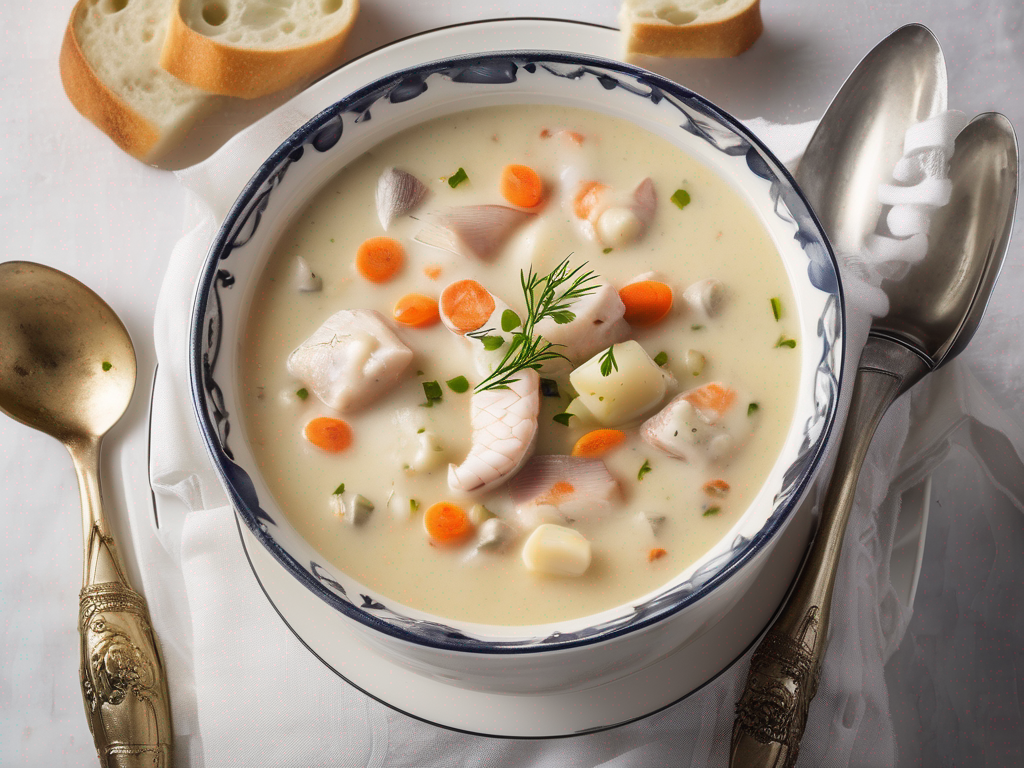
The Best Storage Containers for Fish Chowder Homemade to Prevent Spoilage
Get Your Free Food Safety Cheat Sheet
30 most common foods with instant answers. Print it and stick it on your fridge—completely free!
The Best Storage Containers for Fish Chowder Homemade to Prevent Spoilage
When it comes to homemade fish chowder, proper storage is key to maintaining its freshness and preventing spoilage. Choosing the right storage containers can make a significant difference in preserving the flavor and quality of your delicious dish. In this guide, we will explore the best storage containers for fish chowder homemade to help you keep your meal fresh and safe to eat. (Fish chowder homemade)
Why Proper Storage Matters for Fish Chowder Homemade
Before we delve into the best storage containers for fish chowder, it's essential to understand why proper storage is crucial for maintaining food safety and quality. Here are a few reasons why storing fish chowder correctly is important:
- Prevent Bacterial Growth: Improper storage can lead to the growth of harmful bacteria, which can cause foodborne illnesses.
- Maintain Freshness: Proper storage helps retain the flavor, texture, and nutritional value of the fish chowder.
- Reduce Food Waste: By storing fish chowder properly, you can extend its shelf life and minimize food waste.
Now that we understand the importance of proper storage, let's explore the best containers for storing homemade fish chowder.
Types of Storage Containers for Fish Chowder Homemade
When it comes to storing fish chowder, choosing the right container is crucial. Here are some popular types of storage containers that are ideal for preserving homemade fish chowder:
1. Airtight Glass Containers
- Advantages:
- Excellent at preserving freshness and flavor.
- Non-reactive material that won't absorb odors or flavors.
- Allows you to see the contents easily.
- Best for: Storing fish chowder in the refrigerator or freezer.
2. Plastic Containers
- Advantages:
- Lightweight and easy to stack.
- Available in various sizes and shapes.
- Affordable option for storage.
- Best for: Short-term storage of fish chowder in the refrigerator.
3. Stainless Steel Containers
- Advantages:
- Durable and long-lasting.
- Free from harmful chemicals.
- Can be used for both storing and reheating fish chowder.
- Best for: Storing fish chowder in the refrigerator or freezer.
4. Silicone Storage Bags
- Advantages:
- Reusable and environmentally friendly.
- Flexible and easy to store.
- Can be used in the refrigerator, freezer, or microwave.
- Best for: Storing fish chowder on the go or for meal prep.
Tips for Storing Fish Chowder Homemade
Now that you know the best types of containers for storing fish chowder, here are some tips to ensure that your homemade dish stays fresh and safe to eat:
Properly Cool the Chowder Before Storing
- Allow the fish chowder to cool to room temperature before transferring it to a storage container.
- Hot food can raise the temperature inside the container, leading to condensation and potential bacterial growth.
Use Containers with Tight-Fitting Lids
- Choose containers with secure lids to prevent air and moisture from entering the container.
- Airtight seals help maintain the freshness of the fish chowder and prevent odors from spreading.
Label and Date the Containers
- To keep track of when the fish chowder was made and stored, label the containers with the date.
- Proper labeling helps you identify older batches of chowder and ensures you consume them before they spoil.
Store Fish Chowder in Small Portions
- Divide the fish chowder into smaller portions before storing to facilitate quicker cooling and reheating.
- Smaller portions also make it easier to thaw and reheat only the amount you need, reducing waste.
Store Containers Properly in the Refrigerator or Freezer
- Place the containers of fish chowder on the refrigerator shelves rather than the refrigerator door.
- In the freezer, ensure the containers are stacked securely to maximize space and prevent spillage.
Conclusion
Proper storage is essential for maintaining the quality and safety of homemade fish chowder. By choosing the right containers and following the tips mentioned above, you can ensure that your fish chowder stays fresh, flavorful, and safe to eat. Whether you opt for airtight glass containers, plastic containers, stainless steel containers, or silicone storage bags, proper storage practices can make a significant difference in preserving your delicious homemade dish. Remember to cool the chowder properly, use tight-fitting lids, label and date the containers, store in small portions, and place them correctly in the refrigerator or freezer. With these tips in mind, you can enjoy your fish chowder homemade for longer without worrying about spoilage. (Fish chowder homemade)
Authoritative Food Safety References
These agencies and university labs inform every tip and health precaution we publish.
USDA FoodKeeper – Cold Storage Guidelines
Official refrigerator, freezer, and pantry timelines maintained by the U.S. Department of Agriculture.
Visit USDA FoodKeeperFDA Produce Safety Rule & Grower Guidance
Field-to-fridge handling practices that prevent contamination of fruits, vegetables, and leafy greens.
Visit FDA Produce SafetyCDC Foodborne Illness Prevention Hub
Surveillance-backed guidance on pathogens, symptoms, and steps to reduce foodborne illness risk.
Visit CDC Food SafetyUC Davis Postharvest Technology Center
University research detailing optimal storage atmospheres for produce after harvest.
Visit UC Davis PostharvestPenn State Extension – Home Food Preservation & Safety
Peer-reviewed extension bulletins on safe canning, chilling, and reheating practices.
Visit Penn State ExtensionGet Your Free Food Safety Cheat Sheet
30 most common foods with instant answers. Print it and stick it on your fridge—completely free! Want more? Upgrade to the complete guide with 70+ foods.
Scan your food directly and get instant safety info using our AI-powered camera feature.